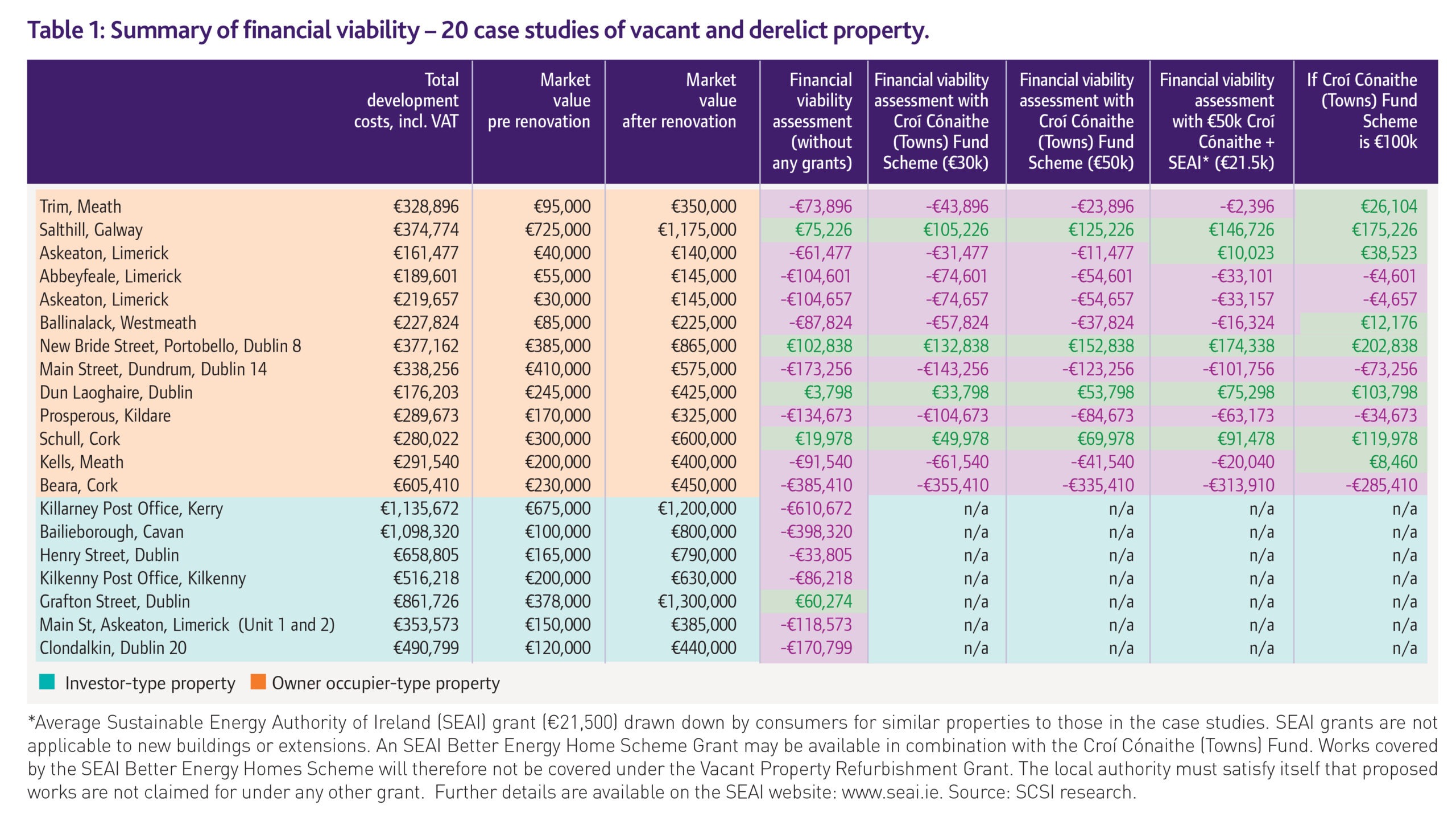Real Cost of Renovation: Derelict & Vacant Properties for Residential Use
This Real Cost of Renovation Report provides data-driven, evidence-based cost information and practical insights on the renovation of a selection of 20 vacant and derelict properties across the country to assist Government, State agencies, and potential homeowners and investors to understand both the key challenges and opportunities in utilising existing properties for residential use. With the integration of cost modelling, we believe the findings of this report will also help dispel the myths and address widely held views across the country that lead to individuals and investors not undertaking refurbishment of derelict and vacant properties.
At a time when rents are at an all-time high, the majority of house prices are prohibitively expensive to the average buyer, high construction costs are challenging new housing development viability, and we are working towards carbon neutrality by 2050, it is imperative that a pragmatic approach is taken to ensure the viability of renovating current building stock for residential use.
The 20 case studies were assessed by various Chartered Surveying disciplines, who provided valuation and building renovation cost assessments of the buildings. The properties within the case studies are divided into ‘types’ similar to those within the Government’s ‘Bringing Back Homes – manual for the reuse of existing buildings’ document (table below). The study contains a mix of current vacant and derelict units, as well as units that have recently undergone a renovation.
The delivery of extra housing to meet the needs of a growing population may be viewed by some as being counterproductive in reducing construction-related carbon in our environment and although there may not be a single solution to address the complex challenge of increasing housing output while simultaneously addressing climate change obligations, there is an opportunity for Government to do both with the renovation of our existing stock. This option provides for a more immediate and sustainable product, in a more expeditious timeframe, and within a more advantageous planning arena.


